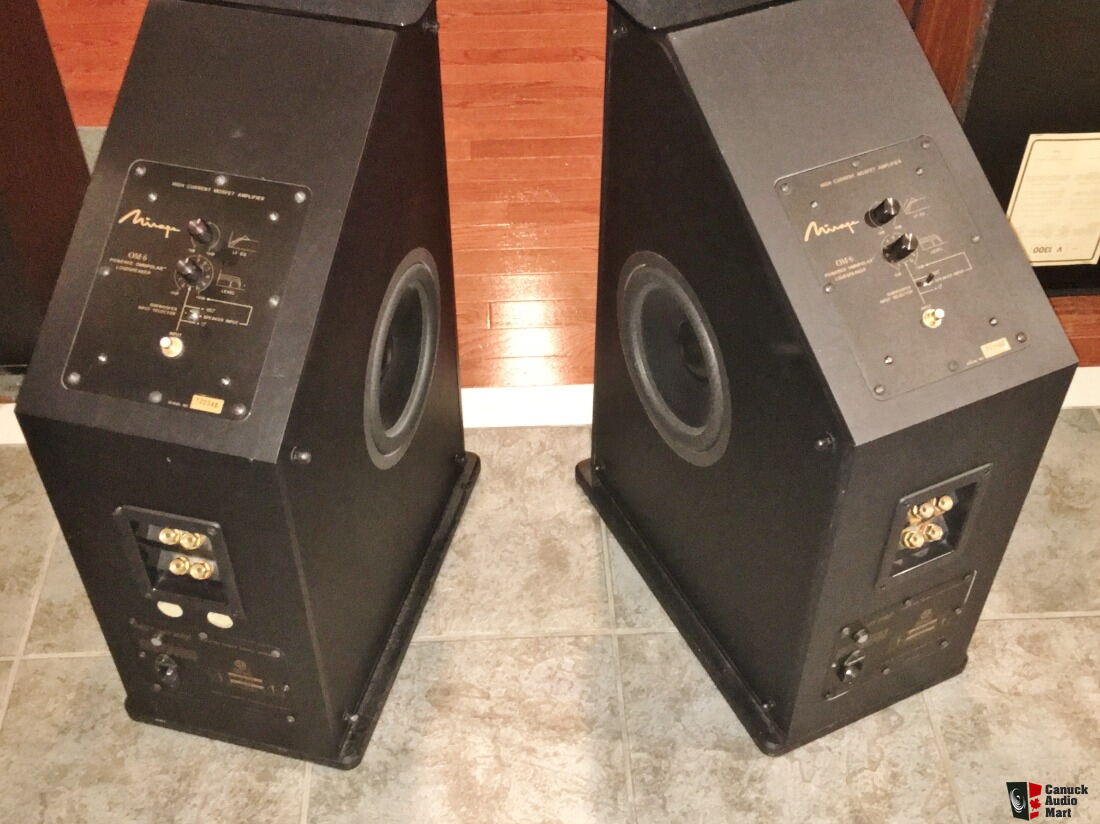Request the Mirage OM-9 schematic
Request the Mirage OM-9 owners manual
Request the Mirage OM-9 service manual
Search the Mirage OM-9 on Ebay
- Mirage Om 6 Speakers Manual Online
- Mirage Om 6 Speakers Manual User
- Mirage Om 6 Speakers Manual Online
- Mirage Om 6 Speakers Manual Free

Advertisement
Download Owner's manual of Mirage OM - 10 Portable Speakers, Speakers for Free or View it Online on All-Guides.com. This version of Mirage OM - 10 Manual compatible with such list of devices, as: OM - 10, OM - C2, OM - C3, OM - R2, OM DESIGN SERIES. Mar 05, 2006 Mirage dubbed this design 'Omnipolar,' and the OM-6 is the first commercial realization of the concept (footnote 1). The narrow front/shallow depth aspect of the Omnipolar idea is immediately evident in the OM-6: Its upper portion is very thin. To accommodate the cabinet volume needed by the woofers, however, the bottom of the enclosure is much.
General information[contribute]
The Mirage OM-9 is a dynamic speaker. It was manufactured from 2000 to unknown.
oM-9 black, 6.5' woofer, 1' hybrid tweeterHugh Jazz (April 30, 2013): Review:
http://www.hometheaterhifi.com/volume_8_2/mirage-om-9-speakers-6-2001.html
Specifications[contribute]
- Ms. Uppa Uranus (April 30, 2013):
- Specifications:
- Drivers: Two 1' Titanium Dome Tweeters, Two 6 1/2' Polypropylene Woofers; Ported

- MFR: 38 Hz - 20 kHz 3 dB
- Nominal Impedance: 8 Ohms
- Crossover Frequency: 1.9 kHz
- Efficiency: 90 dB
- Power Handling: 150 Watts
- Size: 43 3/4' H x 11 9/16' W x 12 3/4' D
- Weight: 45 Pounds Each
- High Gloss Piano Black
- 'Omnipolar technology uses room reflections to create a greater sense of realism. This realism is accomplished by recreating the same ratio of direct to reflected sound found in nature, 70% reflected and 30% direct. The front and rear mounted drivers, radiating in phase, housed in a baffle shallower than the width of a human head, tricks the brain into thinking that it is listening to a live event.'

- In other words, by reducing the depth of the top portion of the speaker, Mirage was able to create an even more enveloping radiation pattern from their already superior bipolar design. This is what makes the Omnipolar design (OM) of the Mirage speakers superior to standard bipolar speakers.
- Jeff Percy, of Mirage, explains the difference between bipolar and Omnipolar: 'The essential difference between bipolar and Omnipolar is that the radiation pattern of the latter is virtually circular. Because the depth of the cabinet is so much less than that of the bipolar speakers we made, which themselves were shallower than competing bipolar designs, the off-axis response (and corresponding wall reflections) are closer in spectral balance and level to the direct sound and that reflected from those surfaces
- which are less off-axis from the speaker. Put differently, if you face the side of an OM speaker and listen, it sounds like the there are drivers mounted there. Not so with a deep 'cabinetted' bipolar. Of course the shallow cabinets alone are not enough - you need wide dispersion drivers as well, to take advantage of them. The end result more closely mimics the performance of actual musical
- instruments - the speakers are more realistic and emotionally involving.'
- As a reminder, with bipolar speakers, the drivers on the front and rear of the enclosure move into the enclosure at the same time, i.e., in phase. With dipolar speakers, such as ribbons and electrostatics (ESLs), the drivers move into the enclosure on one side (e.g., front), and out of the enclosure on the other side (e.g., rear), i.e., out of phase.
Mirage Om 6 Speakers Manual Online
- The OM-9s have a 1' tweeter and 6 1/2' woofer on both the front and rear baffle. The rear baffle slopes from top to bottom, going from a 6' measurement at the top to 12 1/8' at the bottom. The result is a very sleek and elegant design that put it at the top of the list of great looking speakers.
Mirage Om 6 Speakers Manual User
- The OM series utilizes a crossover at 1.9 kHz instead of the usual 3.5 kHz, which puts decidedly less of a strain on the woofers to produce those upper midrange frequencies. The result is a sound that has a truer midrange. To provide a smoother transition between upper and midrange frequencies, the designers lowered the crossover point to 1.9 kHz from 2 kHz (OM-5s, OM-7s) to reach the goal of being less directional (more diffuse). This was incorporated due to the 2-way system being used instead of the 3-way system used in the OM-5s and OM-7s. What allows Mirage to lower the crossover point is the durability and performance of their pure Titanium Hybrid tweeter. With many tweeters of lesser quality, lowering the crossover point would affect the overall performance in a negative way, with lower sound quality and early distortion.
- 'Housing the tweeter in its own specially designed acoustic chamber extends its potential to an amazingly low frequency of 1.9 kHz, where it can then be crossed over to the woofer. Maintaining a low crossover point prevents the woofer from playing frequencies that might make it appear directional.'
Mirage Om 6 Speakers Manual Online
Forum topics on the Mirage OM-9
Mirage Om 6 Speakers Manual Free
No topics on the Mirage OM-9 have been found. If you want to start a new topic, click here.